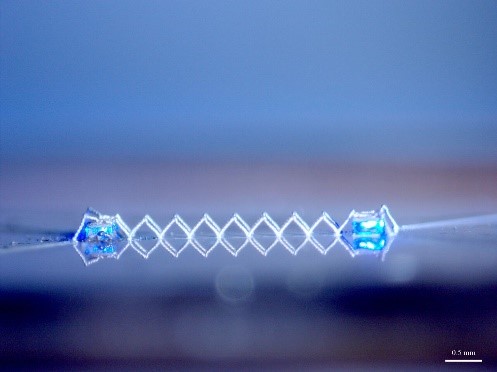
Dr. Rahul Panat
Russell V. Trader Career Development Associate Professor, Mechanical Engineering, Civil & Environmental Engineering, Materials Science & Engineering, and Biomedical Engineering
- 316 Scaife Hall
- 412.268.2501
- 412.268.3348
316 Scaife Hall
Carnegie Mellon University
5000 Forbes Avenue
Pittsburgh, PA 15213
Education
- B.S., Mechanical Engineering, Pune University, India, 1997
- M.S., Mechanical Engineering, University of Massachusetts at Amherst, 1999
- Ph.D., Theoretical and Applied Mechanics, University of Illinois, 2004
Bio
Dr. Panat received his M.S. in Mechanical Engineering from the University of Massachusetts, Amherst, and his Ph.D. in Theoretical and Applied Mechanics from the University of Illinois at Urbana-Champaign (UIUC). After his Ph.D., Panat worked at Intel Corporation, Chandler, AZ, for a decade in the area of microprocessor manufacturing research and development (2004-2014). His work at Intel included research on next generation high density interconnects, thinning of Si, 3-D packaging, and lead-free and halogen-free ICs. He won several awards for his work at Intel, including an award for developing manufacturing processes for the world's first fully green IC chip in 2007. He moved to academics in 2014 and joined the Washington State University, Pullman, before moving to Carnegie Mellon in 2017.
Research
At Carnegie Mellon, Prof. Panat works on micro-scale additive manufacturing, bioelectronics, flexible and printed microelectronics, and advanced energy materials. His research aims to enhance fundamental scientific knowledge and create engineering breakthroughs for several important applications. For example, the Panat group recently mimicked the natural process of the formation of desert roses in the Namibian desert to develop a breakthrough additive manufacturing method that can make 3-D hierarchical materials with structural control from hundreds of nanometers to several millimeters. This method is now used to fabricate ultra-high-density customizable brain-machine interfaces. This research will not only help in deciphering the natural neural networks but also lead to advances in the areas of neuro-prosthetics and treatment modalities for neurodegenerative diseases.
Research Interests: microscale 3D printing, bioengineering, neuroengineering, sensors, Li-ion batteries

Awards and Recognition
- Lean Six Sigma Green Belt Certification at Intel, 2014
- Divisional recognition award at Intel for outstanding efforts in development of new solder paste metallurgy, 2010
- Divisional recognition award at Intel for tape-out and production of Intel’s first six core Xeon® server microprocessor, 2008
- Technology and Manufacturing Group (TMG) excellence award for innovation in packaging to achieve $2.6 billion in package, assembly and test savings, 2008
- Divisional recognition award at Intel for developing manufacturing process for world’s first fully green (halogen free and lead free) integrated circuit (IC) chip, 2007
- Henry L. Langhaar Graduate Award, UIUC, 2004
- Stanley J. Weiss Outstanding Dissertation Award, UIUC 2004
- Materials Research Society (MRS) Gold Medal, 2002